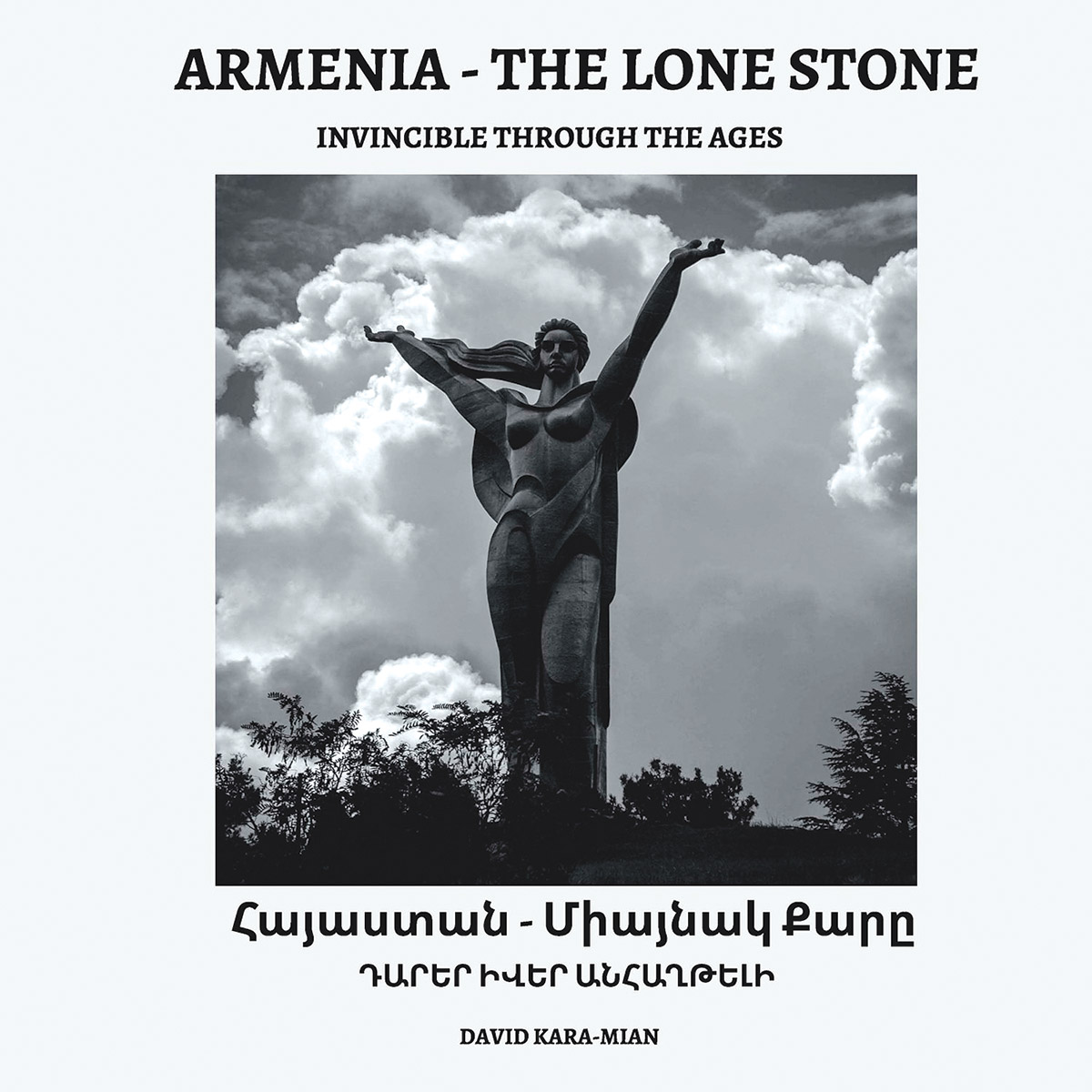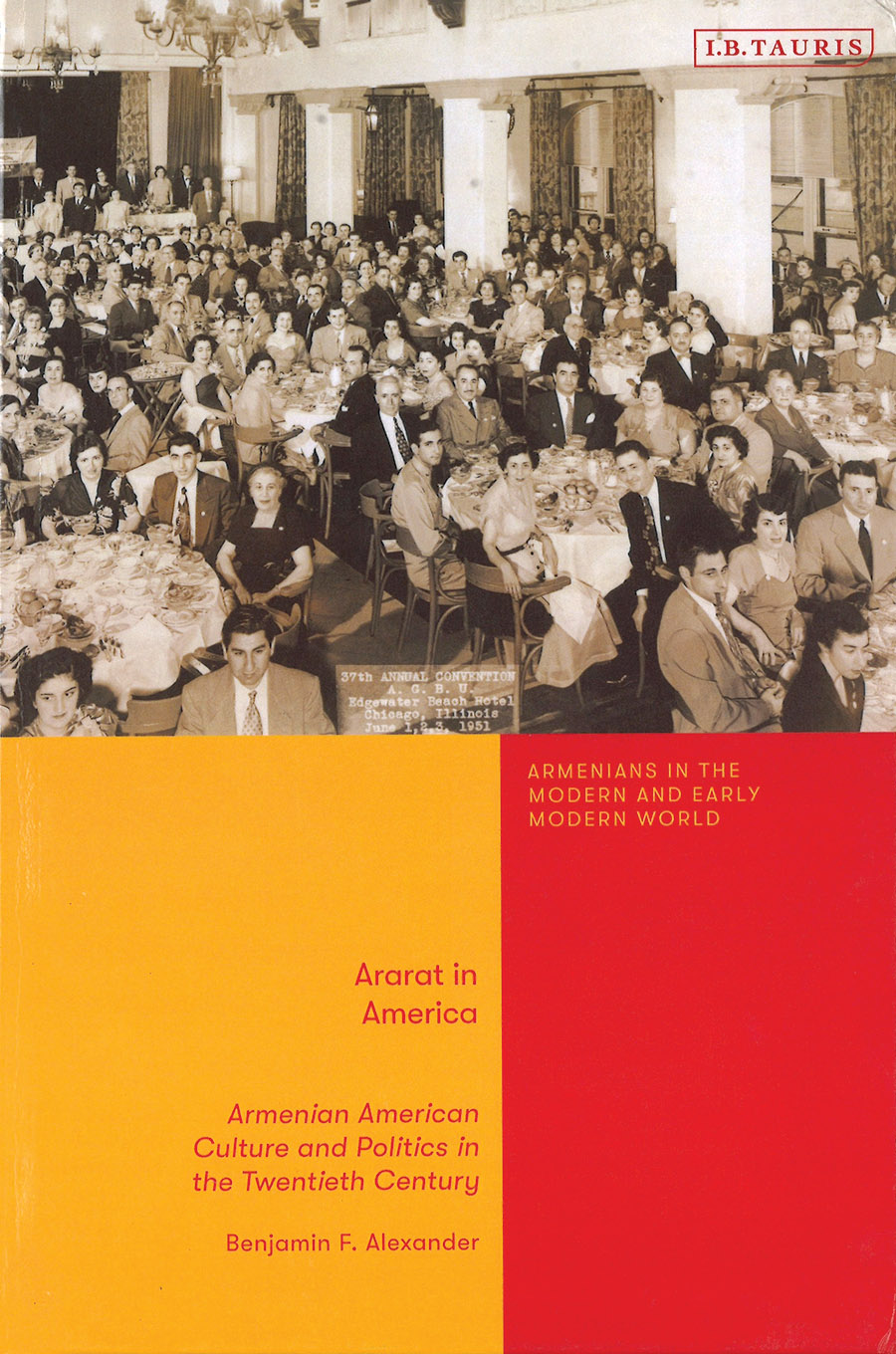 The Armenian Studies Program would like to thank the donors, authors, and publishers for the following books, periodicals, videos, and archival gifts, either offered personally, or to the Program.
The Armenian Studies Program would like to thank the donors, authors, and publishers for the following books, periodicals, videos, and archival gifts, either offered personally, or to the Program.
David Karamian, Oakland, CA, for a copy of his book, Armenia – The Lone Stone: Invincible Through the Ages (Oakland, CA: NorArtGallery LLC, 2022) 358 pp., in English and Armenian. This book is filled with black-and-white and color images taken over a 17-year period, of the most stunning monasteries and monuments in Armenia and Artsakh. Each location’s history is presented in English and Armenian. The book contains poetry, artwork, and a narrative of the author’s discovery of his homeland and culture.
 Dr. Bedross Der Matossian, University of Nebraska, Lincoln, for copies from his editorial series “Armenians in the Modern and Early Modern World”: Ararat in America: Armenian American Culture and Politics in the Twentieth Century by Benjamin F. Alexander (London: I.B. Tauris, 2024) 252 pp., in English. This book examines the role of community leaders and influencers in fostering not only a sense of Armenian identity but specific ethnic-partisan leanings within the group’s population against the backdrop of key geopolitical events from the aftermath of the Armenian Genocide to the creation of an independent and then Soviet Armenia. Syrian-Armenian Women Migrants in Armenia: Gender Identity, and Painful Belonging by Anahid Matossian (London: I.B. Tauris, 2025) 216 pp., in English. This book traces the experiences of Syrian-Armenian women refugees in Armenia as they navigated their changing and gendered identities from their adopted ‘homeland’ to their socially constructed new ‘ancestral’ home. The Armenian Women’s Movement in the Late Ottoman Empire: Modernity, Nationalism, and Gender by Hasmik Khalapyan (London: I.B. Tauris, 2025) 212 pp., in English. This book analyses the history of the women’s movement among Ottoman Armenians. The Agony of a People: Haig Toroyan’s Eyewitness Account of the Armenian Genocide by Zabel Yesayan translated by Arakel Minassian, Maral Aktokmakyan, and Tamar Boyadjian (London: I.B. Tauris, 2025) 201 pp., in English.
Dr. Bedross Der Matossian, University of Nebraska, Lincoln, for copies from his editorial series “Armenians in the Modern and Early Modern World”: Ararat in America: Armenian American Culture and Politics in the Twentieth Century by Benjamin F. Alexander (London: I.B. Tauris, 2024) 252 pp., in English. This book examines the role of community leaders and influencers in fostering not only a sense of Armenian identity but specific ethnic-partisan leanings within the group’s population against the backdrop of key geopolitical events from the aftermath of the Armenian Genocide to the creation of an independent and then Soviet Armenia. Syrian-Armenian Women Migrants in Armenia: Gender Identity, and Painful Belonging by Anahid Matossian (London: I.B. Tauris, 2025) 216 pp., in English. This book traces the experiences of Syrian-Armenian women refugees in Armenia as they navigated their changing and gendered identities from their adopted ‘homeland’ to their socially constructed new ‘ancestral’ home. The Armenian Women’s Movement in the Late Ottoman Empire: Modernity, Nationalism, and Gender by Hasmik Khalapyan (London: I.B. Tauris, 2025) 212 pp., in English. This book analyses the history of the women’s movement among Ottoman Armenians. The Agony of a People: Haig Toroyan’s Eyewitness Account of the Armenian Genocide by Zabel Yesayan translated by Arakel Minassian, Maral Aktokmakyan, and Tamar Boyadjian (London: I.B. Tauris, 2025) 201 pp., in English.  The Armenian Diaspora and Stateless Power: Collective Identity in the Transnational 20th Century edited by Talar Chahinian, Sossie Kasbarian & Tsolin Nalbantian (London: I.B. Tauris, 2024) 316 pp., in English. This book explores the Armenian experience in the 20th century to examine how Armenian diaspora elites and their institutions emerged in the post-genocide period and used “stateless power” to compose forms of social discipline.
The Armenian Diaspora and Stateless Power: Collective Identity in the Transnational 20th Century edited by Talar Chahinian, Sossie Kasbarian & Tsolin Nalbantian (London: I.B. Tauris, 2024) 316 pp., in English. This book explores the Armenian experience in the 20th century to examine how Armenian diaspora elites and their institutions emerged in the post-genocide period and used “stateless power” to compose forms of social discipline.
 Hye Sharzhoom Armenian Action
Hye Sharzhoom Armenian Action